#Kwakwaka’wakw
Text


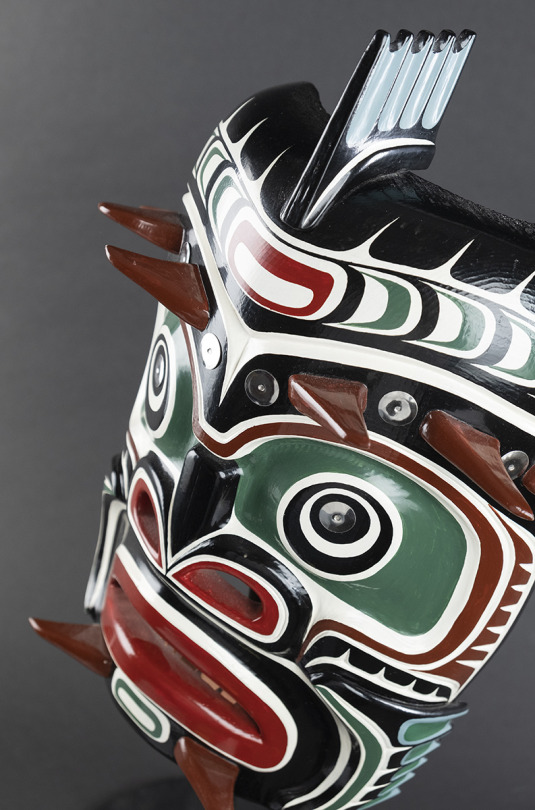
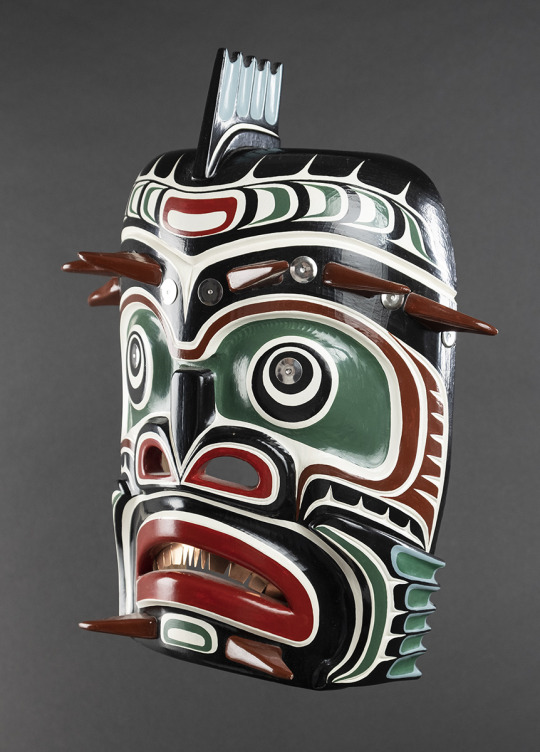
Sculpin “Gwama”
Henry “Hank” Speck Jr. (Tlawitsis Kwakwaka’wakw)
red cedar, acrylic, tacks, copper. 13.5” x 10” x 4.5”
#henry speck jr#hank speck#henry hank speck jr#kwakwaka’wakw#masks#carving#indigenous art#native art#first nations art#ndn art
45 notes
·
View notes
Text
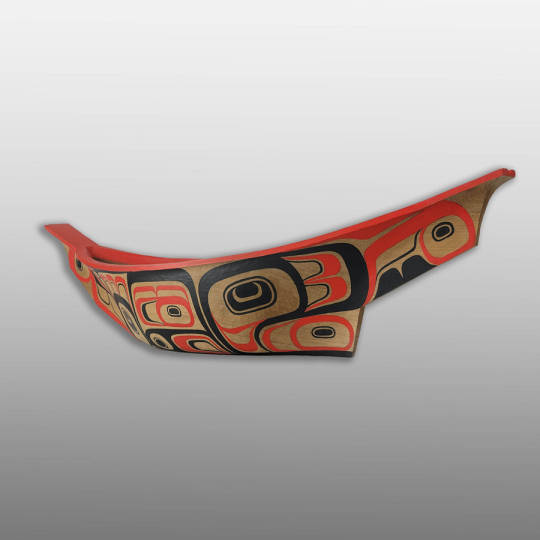



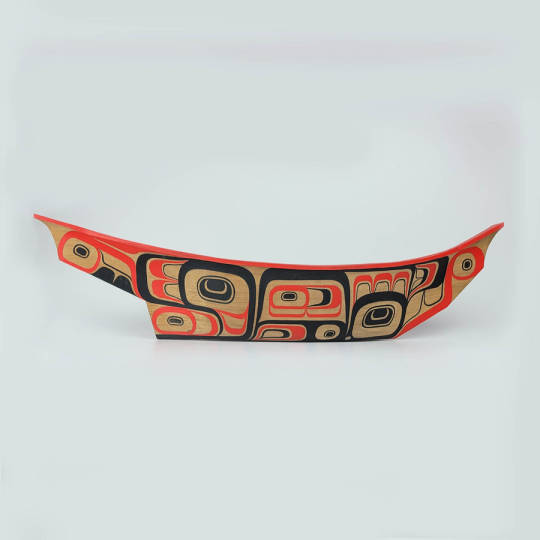


Model Cedar Canoe
Cole Speck
from the website:
In creating this piece, Cole was inspired by a model canoe carved by the great 19th-century Heiltsuk artist, carver, and canoe maker Captain Richard Carpenter (1841-1931). The killer whale designs on the sides of the canoe are one of Carpenter's family crests. Carpenter's canoe is held in the collections of the Museum of Anthropology at the University of British Columbia in Vancouver.
33 notes
·
View notes
Text
For #InternationalBeaverDay here are two wooden beaver effigies spotted at the Smithsonian National Museum of the American Indian:

object name: beaver figure
culture: Kwakwaka’wakw (Kwakiutl)
place of origin: British Columbia
date: c. 1900
materials: wood, paint
dimensions: 16.5 cm. I.; 15 w.; 28 h.
NMAI catalogue # 21/1355

object name: beaver bowl
culture: Tlingit
place of origin: Klukwan, Alaska
date: c. 1850
materials: wood
dimensions: 33 cm. I.; 16 w.; 13 h.
NMAI catalogue # 23/8417
#International Beaver Day#animal holiday#beaver#rodents#Native American art#First Nations art#Indigenous art#19th century art#20th century art#effigy#figure#bowl#sculpture#woodwork#carving#Tlingit#Kwakwaka’wakw#Kwakiutl#British Columbia#Alaska#Smithsonian National Museum of the American Indian#museum visit#animals in art
88 notes
·
View notes
Text


Killer Whale Pod of Many Nations (2006)
by Odin Lonning (Tlingit)
carved cedar with acrylic
The seven-foot-long red cedar carving of five killer whales in five Northwest Coast Native art styles is a tribute to endangered orcas and Coastal tribes from Puget Sound to Alaska.
The Tlingit whale denotes how a crest originates in the story of Natsiclané, or Creation of the Killer Whale. The Haida whale embodies two stories about the Raven-Finned Killer Whale and the adventures of Nanasimgit and His Wife. The Nuu-chah-nulth whale signifies the timeless wolf-killer whale connection in their culture and commemorates Tsux’iit (Luna).
The Kwakwaka’wakw whale celebrates the triumphant reunion of Keetla (Springer) with her pod in Namgis First Nation territory in British Columbia. A vocal delegation of “Springer’s Peeps” cheered enthusiastically for this whale, which shows Springer spyhopping. The Coast Salish whale pays homage to the Indigenous peoples and Southern Resident orcas of the Salish Sea.
Killer Whale Pod of Many Nations: “Carving for a Greater Cause” by Ann Stateler, for WHULJ, The Newsletter of the Puget Sound Chapter of the American Cetacean Society, Winter 2007 (PDF here)
This piece was made possible by a Native Arts grant from the Potlatch Fund.
On display at the Seattle Aquarium, in the Puget Sound Orcas Family Activity Center
Photograph 1 by Scott Beale / Laughing Squid
Photograph 2 by Bryan Lor / Adventures of BL
#kashoplili#tlingit#coast salish#namgis#indigenous#native american#puget sound#first nations#haida#Kwakwaka’wakw#Nuu-chah-nulth#tradish#tradishional art#orca whale#killer whale#seattle#pnw#pacific northwest#northwestern
24 notes
·
View notes
Text
1914 silent film. wow! OK, I'm sorry I missed this screening.
"A remarkable portrait of the Kwakwaka’wakw (formerly Kwakiutl) people of northern Vancouver Island and the central coast, In the Land of the Head Hunters was the first feature film made in B.C. and is the oldest extant feature made in Canada. It’s also the first feature made with an entirely Indigenous North American cast. Directed by Edward S. Curtis, the renowned American photographer of First Nations life, the film mixes documentary and dramatic elements, recording authentic traditions and rituals, including the potlatch ceremony, but also offering an epic tale of love, war, and adventure set in pre-European times. It premiered in New York and Seattle in December 1914. This beautiful DCP restoration includes John J. Branham’s original 1914 score performed by Vancouver’s Turning Point Ensemble."
#indigenous people#indigenous land#CKA British Columbia#uncolonizing#Kwakwaka’wakw#to watch#critical thinking skills#history#culture
2 notes
·
View notes
Text

Sammy Dawson, Hummingbird
Yellow Cedar Panel
0 notes
Photo



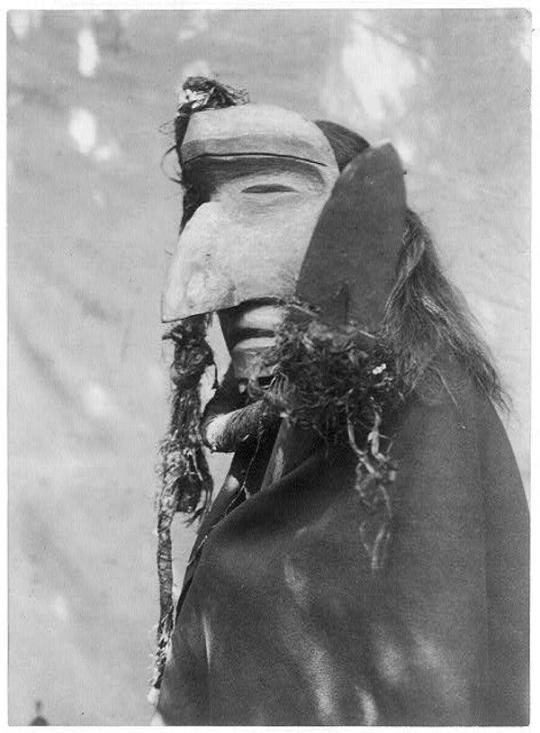
Born #onthisday in Wisconsin in 1868, the US photographer and ethnologist Edward S. Curtis. Here's his circa 1914 series depicting the ceremonial dress and masks of the Kwakwaka’wakw, an indigenous people of the Pacific Northwest Coast — https://publicdomainreview.org/collection/edward-curtis-photographs-of-kwakwaka-wakw-ceremonial-dress-and-masks-ca-1914
126 notes
·
View notes
Text
WEST INDIGENOUS NORTH AMERICAN RESOURCES
The Anthropological Masterlist is HERE.
The Western United States is a North American region that constitutes the western part of the United States. Alaska and Hawaii are also considered part of the Western United States.
AHTNA ─ “The Ahtna, or Ahtena, people are an Indigenous North American people. They are native to the Copper River in southern Alaska.”
─ Ahtna Information
ALEUT ─ “The Aleuts, or Unangas, are an Inuit people. They are native to the Aleutian Islands between Russia and Alaska.”
─ Aleut Information
─ Aleut Museum
─ Aleut Language
ATHABASKAN ─ “Athabaskan, or Dene, is an Indigenous American linguistic group that share the Athabaskan language family. They are native to Alaska, north Canada, and southwest United States of America.”
─ Athabaskan Languages
─ Athabaskan Language Conference
CAHUILLA ─ “The Cahuilla, or Ivilyuqaletem, people are an Indigenous North American people. They are native to the center of southern California.”
─ Cahuilla Information
─ Cahuilla Language
─ Cahuilla Language
CROW ─ “The Crow, or Absaroka, people are an Indigenous North American people. They are native to central and south Montana.”
─ Crow Information
─ Crow Language
HOPI ─ “The Hopi are an Indigenous North American people. They are native to northeastern Arizona.”
─ Hopi Information
─ Hopi Culture and History
─ Hopi Dictionary
INUIT ─ “The Inuit are an Indigenous North American people. They are native to Greenland, Canada, and Alaska.”
─ Inuit Collections
─ Inuit Religion
─ Inuit Dictionary
KUMEYAAY ─ “The Kumeyaay, or Tipai-Ipai, people are an Indigenous North American people. They are native to southern California.”
─ Kumeyaay Culture
─ Kumeyaay Language
─ Diegueño Dialect
KWAKWAKA’WAKW ─ “The Kwakwaka’wakw, or the Kwakiutl, people are an Indigenous North American people. They are native to Vancouver Island.”
─ Kwakwaka’wakw Mythology
─ Revival of the Kwakwaka’wakw Langauge
─ The Bible in Kwakwaka’wakw
LUISEÑO ─ “The Luiseño, or Payómkawichum, people are an Indigenous North American people. They are native to the coastal area of southern California.”
─ Luiseño Culture
─ Luiseño History
─ Luiseño Language
MIWOK ─ “The Miwok, or Miwuk, people are an Indigenous North American people. They are native to northern California.”
─ Miwok Mythology
─ Miwok History
─ Miwok Dictionary
NAVAJO ─ “The Navajo, or Diné, people are an Indigenous North American people. They are native to the southwestern United States of America.”
─ Navajo Culture
─ Navajo Mythology
─ Navajo Language
O’ODHAM ─ “The O’odham people are an Indigenous North American people. They are native to the Sonoran Desert in Arizona.”
─ O’odham Dictionary
PAIUTE ─ “The Northern Paiute people are an Indigenous North American people. They are native to the Great Basin in the United States of America.”
─ Paiute Culture
─ Paiute Culture
─ Paiute History
PUEBLO ─ “The Pueblo, or Puebloan, people are an Indigenous North American people. They are native to New Mexico and Arizona.”
─ Isleta Pueblo Information
SHOSHONE ─ “The Shoshone, or Shoshoni, people are an Indigenous North American people. They are native to Wyoming, Idaho, and Nevada.”
─ Shoshone Information
─ Shoshoni Language Project
SNOHOMISH ─ “The Snohomish people are an Indigenous North American people. They are native to the Puget Sound area of Washington.”
─ Snohomish Culture and History
TEWA ─ “The Tewa are an Indigenous North American people. They are native to the Rio Grande, New Mexico.”
─ The Ethnogeography of the Tewa Indian
WINTUN ─ “The Wintun people are an Indigenous North American people. They are native to North California.”
─ Wintu Language
ZUNI ─ “The Zuni, or Zuñi, people are an Indigenous North American people. They are native to western New Mexico.”
─ Zuni Culture
─ Zuni Culture
─ Zuni Language
#resources#western united states#ahtna#aleut#athabaskan#cahuilla#crow#hopi#inuit#kumeyaay#kwakwaka'wakw#luiseño#miwok#navajo#o'odham#paiute#pueblo#shoshone#snohomish#tewa#wintun#zuni
56 notes
·
View notes
Text


Grizzly Bear - Gia-La (Looking Left), Grizzly Bear - Gia-La (Looking Right)
Chief Henry U’dzistalis Speck (Kwakwaka’wakw)
framed serigraphs
#u’dzistalis#chief u’dzistalis#henry speck#chief henry speck#kwakwaka’wakw#indigenous art#native art#first nations art#ndn art
22 notes
·
View notes
Text

Chilkat Blanket Necklace
David Neel
from the website:
From my childhood I wanted to be a Kwakiutl artist. My first piece of Northwest coast Indigenous art was a painting, which I did when I was 8 years old, which based on a Chilkat blanket that I saw in a National Geographic magazine. Ever since that time I have wanted to do another art work based on the Chilkat style design. I came upon the idea to make a pendant with a Chilkat style design, using 23K gold (96.5% pure) wire to symbolize the distinctive goats wool fringe. I then inlaid the eyes, not with abalone shell, but with 23K gold to compliment the gold “fringe”. The result is a one-of-a-kind necklace that pays homage to the Chilkat robes, which came to the Kwakwaka’wakw from the Tlingit people through marriage.
- David Neel
35 notes
·
View notes
Photo

Fig. 1. Yaxwiwe’, Kwakwaka’wakw frontlet, originally Tsimshian made, late nineteenth century. Maple wood, abalone shell, paint, 9 3/8 x 9 x 3 in. Seattle Art Museum 91.1.47. Photography by Kathryn Bunn-Marcuse
2 notes
·
View notes
Note
hello! i'm a big splatoon fan as well, and recently i've been trying to make salmonid art inspired by the art styles of pacific northwest first nations (specifically the kwakwaka'wakw people) (i know you're not kwakwaka'wakw, but i don't know anybody who is).
i hope greatly that it isn't appropriative in any way, and if you can, do you have any recommendations on how to use the style as genuinely and respectfully as possible? my goal is to re-imagine the salmonids in a more sympathetic light while still acknowledging their lore and real-life influences.
sorry if this is bothering you or rude in any way, feel free to ignore if this makes you uncomfortable. thank you! (sorry for the wall of text)
Hi, thank you so much for asking.
My initial thoughts and opinions is that I’m fully supportive of a re-imagining of the salmonids, but I think that if the re-imagining is in the hands of a non-native person primarily, I think avoiding utilizing indigenous culture and imagery for them would be the wisest choice 👍 the formline graffiti is one of the main aspects that tie the salmonids to indigenous culture, and that combined with the way salmonids are treated by the lore and the game makes me feel like one of the first steps to re-imagining the salmonids would be to not use imagery/culture of a racial minority, if that makes sense.
Of course I’m just one person, and talking to other Indigenous people to get other opinions is always a great option! Especially Kwakwaka’wakw people, if that’s the formline style/culture you’re using as an influence for the art.
#ask#salmon run#indigenous discussion#I’m struggling to elaborate on what I’m trying to explain a bit#but like. in the context of the salmonids specifically I think they’d be better off not being tied to the culture of a racial minority-#-when they’re being re-imagined by someone whose not of that race/ethnicity/culture.#if that makes any sense?#i know things are different for other indigenous people when it comes to re-imagining things like this#everyone has their own way of re-shaping how x media could be better in terms of the usage of culture#etc.
12 notes
·
View notes
Link
I remain fascinated by the advanced agricultural and maricultural practices of the first people to inhabit the Americas both north and south. This document talks about the propagation and proliferation of Eelgrass as a food crop. Eelgrass is an important habitat for other species including forage fish like Haring consumed by both people and salmon and has led to the decline of both fish populations as well as Southern Resident Orca populations in Puget Sound.
.
8 notes
·
View notes
Text

Dzunukwa Mask in Audain Art Museum, carved by Kwakwaka’wakw First Nations artist Beau Dick.
Camera: Samsung Galaxy S10.
#first nations canada#adventure#adventure life#whistler#canada#british columbia#phone photography#photography#first nations art#first nations#museum#art#mask#first nations mask#beau dick#explore the world#galaxys 10#travel#wood carving#beautiful world#black and white#black and white photography#digital#samsung galaxy s10#samsung#audain art museum#iso 500
15 notes
·
View notes
Text
Baptism art, Indigenous Peoples' Day
Happy Indigenous Peoples' Day! Here's a baptism mural by Chief Tony Hunt Sr., OBC (Kwakwaka’wakw, 1942–2017).

+++
The Kwakwa̱ka̱ʼwakw, also known as the Kwakiutl, are one of the indigenous peoples of the Pacific Northwest Coast. Their current population, according to a 2016 census, is 3,665. Most live in their traditional territory on northern Vancouver Island, nearby smaller islands including the Discovery Islands, and the adjacent British Columbia mainland. Some also live outside their homelands in urban areas such as Victoria and Vancouver. They are politically organized into 13 band governments. https://en.wikipedia.org/wiki/Kwakwaka%CA%BCwakw
7 notes
·
View notes
Photo
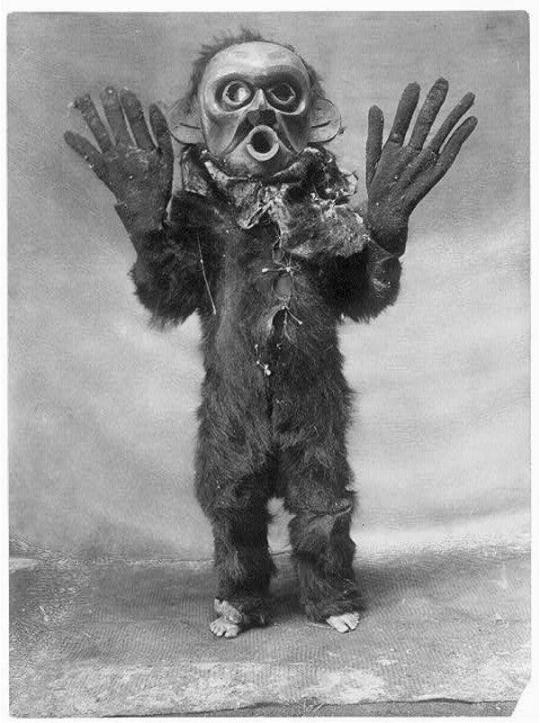
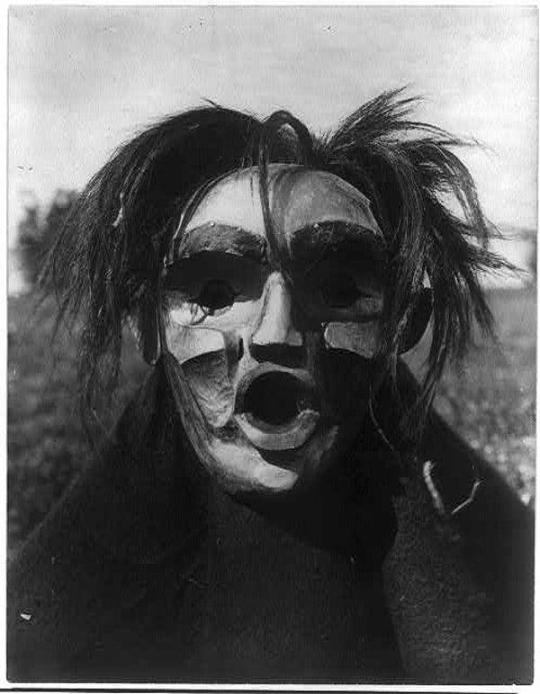


Born #onthisday in Wisconsin in 1868, the US photographer and ethnologist Edward S. Curtis. Here's his circa 1914 series depicting the ceremonial dress and masks of the Kwakwaka’wakw, an indigenous people of the Pacific Northwest Coast — https://publicdomainreview.org/collection/edward-curtis-photographs-of-kwakwaka-wakw-ceremonial-dress-and-masks-ca-1914
80 notes
·
View notes